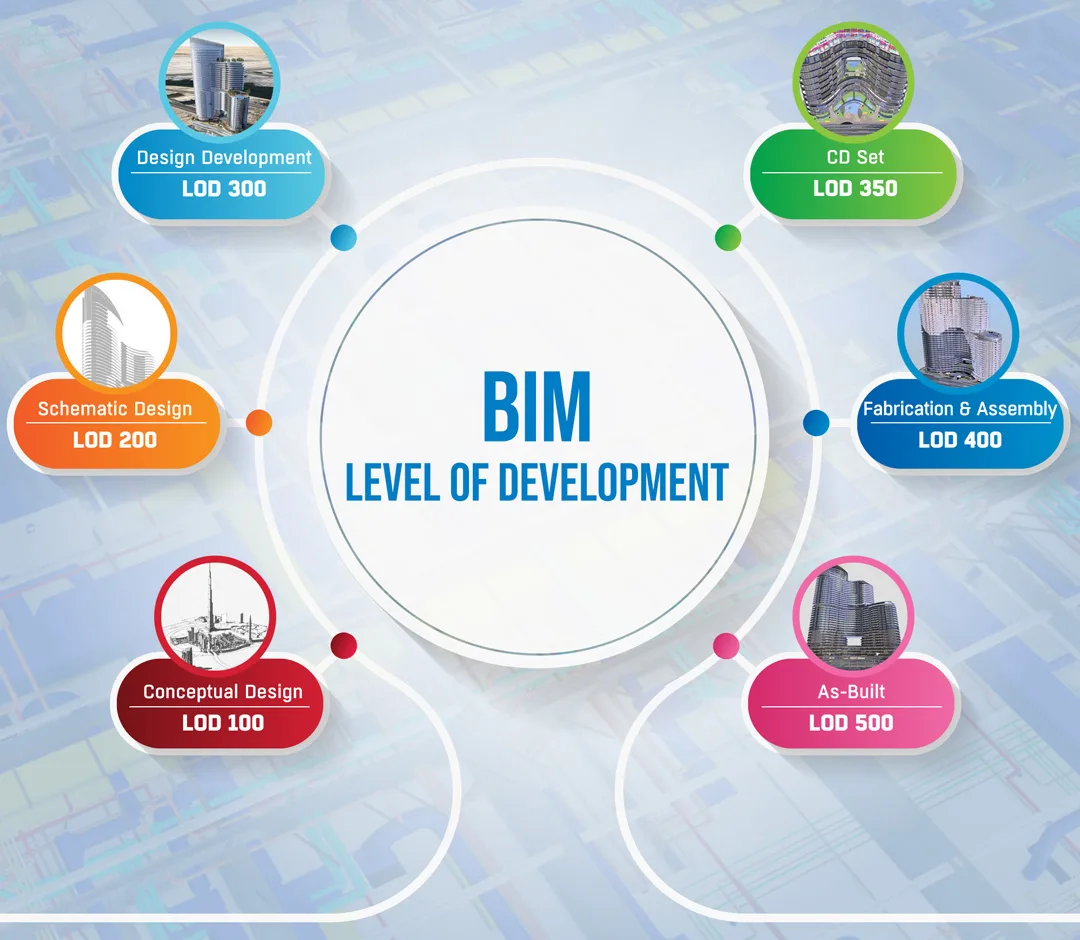
Table of Contents
The use of technology has revolutionized the constantly changing field of construction. Building information modeling (BIM) has become a disruptive force that is revolutionizing the management, planning, and execution of construction projects. A key component of BIM that warrants more investigation is the Level of Development (LOD). This article explores the importance of BIM LOD and how it might transform the construction sector.
Understanding BIM and LOD
BIM Overview
Before delving into the intricacies of LOD, it’s essential to understand the fundamentals of Building Information Modeling. A building’s or infrastructure’s functional and physical attributes are represented digitally using BIM. It goes beyond 3D modeling, encompassing data about geometry, spatial relationships, geographic information, and more.
The Role of LOD
The Level of Development in BIM refers to the degree of detail and accuracy of the information within the model. LOD acts as a critical parameter, defining the reliability and usability of the BIM model at different stages of a project. It ranges from LOD 100 to LOD 500, with each level representing a specific stage of development.
Benefits of Implementing BIM LOD
Improved Cooperation
One of the key advantages of BIM LOD is its ability to facilitate seamless collaboration among project stakeholders. By establishing a standardized level of detail, teams can work cohesively, reducing errors and ensuring consistency throughout the project lifecycle.
Better Decision-Making
BIM LOD empowers decision-makers with accurate and reliable data. As the model progresses through different LODs, project managers can make informed decisions based on real-time information, ultimately leading to better project outcomes and cost savings.
Economy of Cost
Construction projects often face budgetary constraints and overruns. BIM LOD helps in mitigating these challenges by providing a clear understanding of project requirements and potential issues. This foresight allows for better cost estimation and risk management, contributing to overall cost efficiency.
The Evolution of BIM LOD in Construction
Early Stages (LOD 100-200)
During the initial stages of a project, BIM LOD focuses on conceptualization and basic geometric representations. This lays the foundation for design discussions and feasibility assessments, setting the direction for subsequent project phases.
Design Development (LOD 300-400)
As the project progresses, BIM LOD reaches a higher level of detail. Detailed elements such as dimensions, specifications, and material properties become more refined. This stage is crucial for design development and coordination among various disciplines.
Construction and Beyond (LOD 500)
At the highest level of development, LOD 500 represents the as-built condition of the project. This final stage ensures that the digital model aligns precisely with the physical construction. It serves as a comprehensive asset management tool for facility maintenance and future renovations.
Challenges and Future Trends
Implementation Challenges
Despite its transformative potential, the adoption of BIM LOD is not without challenges. Resistance to change, lack of standardized processes, and the need for extensive training are some hurdles that organizations may face. Overcoming these challenges requires a strategic approach and a commitment to embracing the benefits of BIM LOD.
Integration with Emerging Technologies
Looking ahead, the integration of BIM LOD with emerging technologies like artificial intelligence and augmented reality holds immense promise. These technologies can enhance the capabilities of BIM, further streamlining construction processes and providing unprecedented insights into project management.
Conclusion
In conclusion, the revolutionizing impact of BIM on the construction industry cannot be overstated. The Level of Development within the BIM framework acts as a guiding force, steering projects from conceptualization to fruition with unparalleled precision and efficiency. As the construction sector continues to embrace digital transformation, BIM LOD stands at the forefront, shaping the future of how we design, build, and manage the built environment. Embracing BIM LOD is not just an option; it’s a necessity for those striving to thrive in the dynamic landscape of modern construction.
